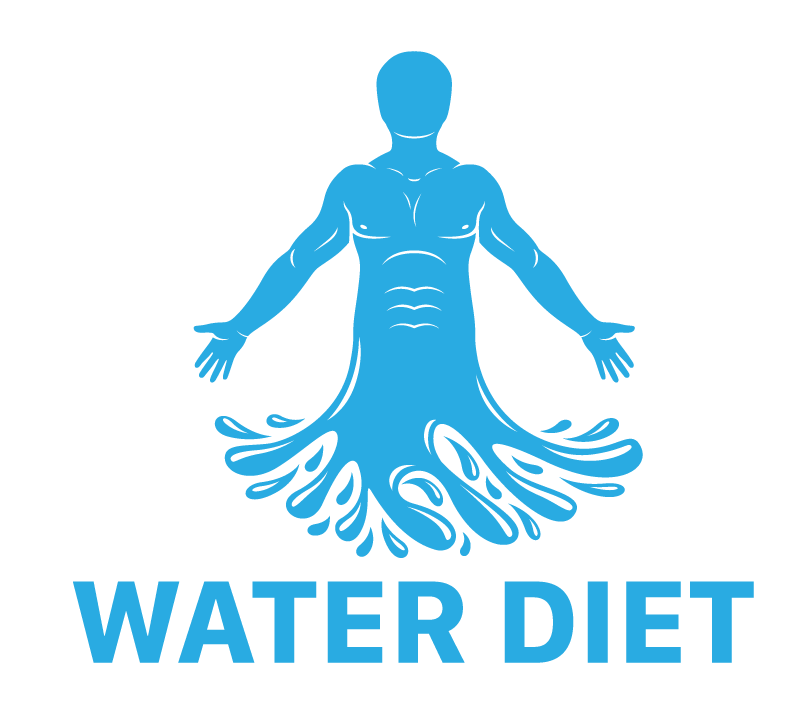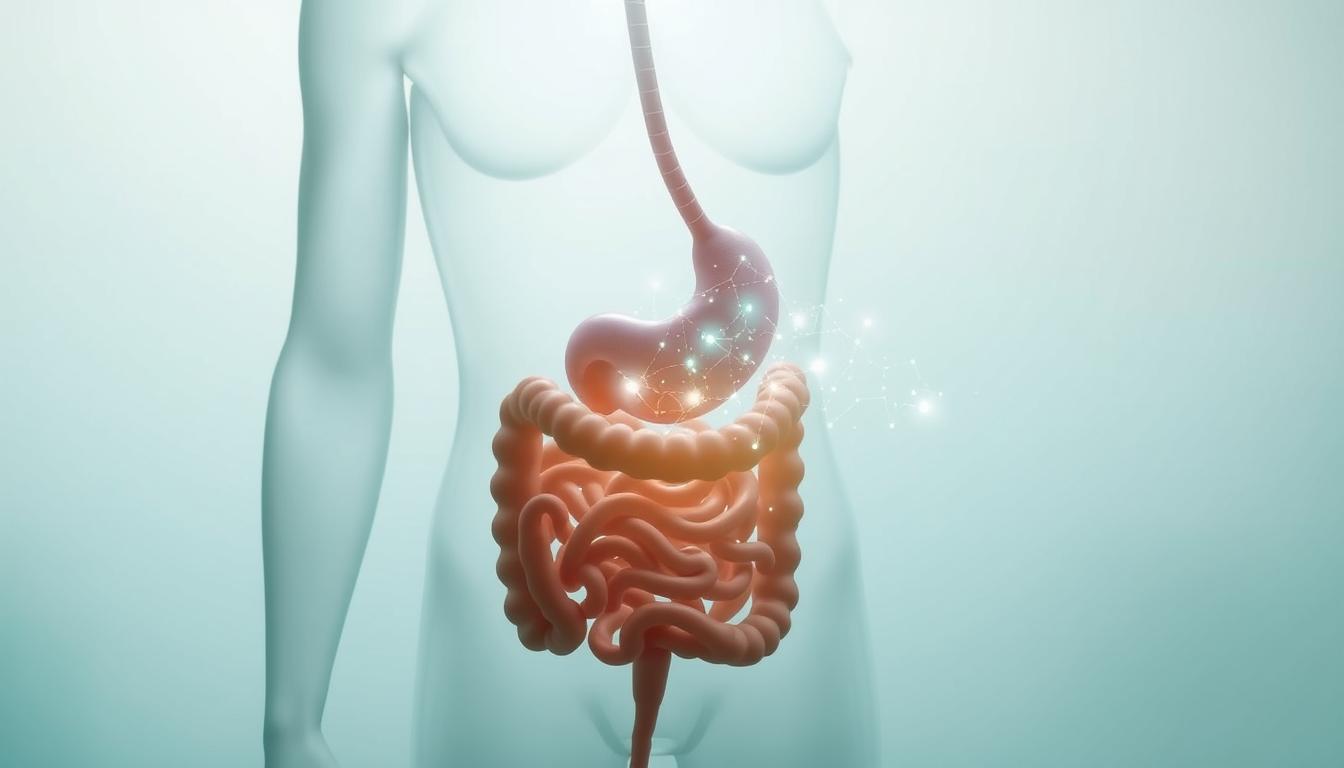Starting your first water fast can feel both thrilling and a bit scary. With the right preparation, you’ll find it easier and more rewarding. Water fasting has a long history and is now popular for its health perks, like losing weight and boosting metabolic health.
Before you begin, learning about water fasting is key. This beginner’s guide to water fasting will give you important tips for getting ready. It covers everything from making dietary changes to staying hydrated with mineralized water. Always talk to a healthcare expert, especially if you have health issues. Getting the timing right and having a plan for eating after the fast are also crucial to avoid problems and make the experience good.
Key Takeaways
- Most fasting plans suggest fasting for up to 24 hours at first.
- Experts say to drink 2-3 liters of water each day while fasting.
- Always talk to a healthcare professional before starting a water fast.
- Time your fast when you’re not stressed and avoid hard activities.
- Slowly start eating again after the fast with five small meals a day to prevent refeeding syndrome.
- Using hemp seed oil can help you enter a ketogenic state and meet your nutritional needs.
Understanding Water Fasting: The Basics
Water fasting means not eating any food but only drinking water. It’s getting popular for its health perks and long history. Let’s explore why water fasting is seen as a special way to improve health and wellness.
What is Water Fasting?
Water fasting is about not eating anything with calories and only drinking water. People usually do it for a few days. Beginners should start with a 1-day fast and not go over 3 days without a doctor’s advice. This helps the digestive system rest and brings health benefits.
Historical Context and Modern Uses
In the past, water fasting was part of many spiritual and religious practices. It was seen as a way to purify oneself and focus on the spirit. Now, people do it for health reasons too. Research shows it can reduce stress, help with weight loss, and improve hydration.
Core Benefits of Water Fasting
Many people are interested in water fasting for its benefits. It can help with cell repair and reduce inflammation, which may lower the risk of diseases like heart disease and diabetes. It can also help with weight loss and make the body more resilient to stress. But, it’s important to do it safely to avoid not getting enough nutrients or dehydration.
If you’re thinking about trying water fasting, talk to a healthcare provider first. They can make sure it’s safe for you, especially if you have health issues. Getting ready by eating less processed food and talking to a professional can help you get the most benefits safely.
Learning about water fasting is the first step to using it safely and effectively for your health.
Consulting a Healthcare Professional
Before starting a water fast, it’s key to talk to a healthcare professional. Getting medical advice helps you fast safely and avoid risks.
Why You Should Seek Medical Advice
Healthcare experts are crucial when thinking about water fasting. They check your health and see if fasting is right for you. They give advice tailored to your health, making sure water fast safety. This is very important for people with health issues, as fasting can make things worse or affect some medicines.
Potential Risks and Who Should Avoid Water Fasting
Water fasting can lead to headaches, dizziness, and feeling very tired. Serious problems like heart rhythm issues and refeeding syndrome can happen too. People who should not fast include kids, the elderly, pregnant or nursing moms, and those with eating disorders. Also, those with chronic diabetes or heart problems should not fast.
Health Conditions That May Require Supervision
Some people can fast under a doctor’s watchful eye. Those with chronic kidney disease, heartburn, GERD, or metabolic disorders might fast safely with close monitoring. Regular check-ins help manage water fasting risks, catching any problems early.
| Fasting Regimen | Description | Typical Duration |
|---|---|---|
| 5:2 Fasting | Eat normally for 5 days; restrict to 500-600 calories on 2 non-consecutive days | Short-term |
| 16:8 Fasting | Fast for 16 hours; eating window of 8 hours daily | Daily |
| Alternate Day Fasting | Alternate between days of eating normally and days of heavy caloric restriction | Long-term |
| Water Fasting | Consume only water for a specific period | 24-72 hours |
Talking to a healthcare professional before a water fast is crucial. This ensures water fast safety and helps you avoid health risks. It lets you enjoy fasting’s benefits while keeping your health first.
Choosing the Right Time for Your Fast
Choosing the right time for a water fast is key to getting the most benefits without disrupting your life. We’ll look at the best ways to pick the perfect time. This includes finding low-stress periods, managing your energy, and considering work and social life.
Low-Stress Periods
Start your water fast when you’re feeling the least stressed. This helps you manage your energy better. Stress can make it hard to follow a fasting plan. So, starting during a vacation or on a weekend could be best for some people.
Energy Requirements and Timing
Understanding how long to fast and how to keep your energy up is crucial. Pick a time when you won’t be very active. This could be during slow work days or when you can easily take breaks. It makes fasting easier to manage.
Work and Social Considerations
Think about your work and social life too. Try to avoid busy work times or big social events. This helps keep you from getting stressed while fasting. Also, planning around social events helps you avoid situations where eating is a big deal, making it easier to stick to your fast.
| Popular Fasting Methods | Key Features |
|---|---|
| Time-Restricted Eating (16:8) | Fasting for 16 hours with an 8-hour eating window |
| 5:2 Method | Restricting calories to 500-600 on two non-consecutive days |
| Eat-Stop-Eat | 24 hours of fasting once or twice a week |
| Alternate-Day Fasting | Fasting every other day or sub-500 calorie intake |
How to Prepare for Your First Water Fast: Essential Tips
Getting ready for a water fast means getting your mind and body ready. It’s important to mentally prepare and take practical steps like eating less and avoiding processed foods.
Mental Preparation
Having a positive mindset is key for fasting. Seeing the fast as a way to improve your health can help you stay motivated. Setting goals for what you want to achieve, like spiritual growth or better health, is also helpful.

Gradually Reducing Food Intake
It’s a good idea to eat less before starting a water fast. Doing this over 3-4 days can make the transition easier. You can eat smaller meals more often, focusing on foods like fruits and veggies.
This helps your body get ready for fasting. It also makes it easier to handle hunger later on.
Eliminating Processed Foods
It’s important to avoid processed foods before a fast. These foods often have a lot of sugar, salt, and unhealthy fats. Eating whole foods instead can help keep your blood sugar stable and reduce the need to eat often.
- Mental readiness for fasting: Develop a positive mindset and set clear intentions.
- Reducing food intake for fasting: Decrease portion sizes gradually, eat frequently, opt for balanced, smaller meals.
- Avoiding processed food: Focus on consuming whole, nutrient-dense foods.
| Preparation Stage | Key Actions |
|---|---|
| Mental Preparation | Cultivate a positive mindset towards fasting. Set clear goals and intentions. |
| Reducing Food Intake | Reduce portion sizes gradually, eat frequently, opt for balanced, smaller meals. |
| Eliminating Processed Foods | Avoid high sugar, salt, and unhealthy fats. Focus on whole, nutrient-dense foods. |
By following these steps, you can make fasting easier and more successful.
Optimal Pre-Fast Diet
Before starting a water fast, it’s key to eat well. Eating foods full of nutrients helps our bodies get ready. Here are some tips for a great pre-fast diet.
Importance of Whole Foods
Whole foods are crucial for fasting prep. They’re packed with vitamins, minerals, and antioxidants. These nutrients keep us healthy and full of energy. Eating whole foods also means less processed foods, which is good for fasting.
Benefits of a Mediterranean Diet
The Mediterranean diet is great before fasting. It includes fruits, veggies, whole grains, and lean proteins. These foods give us the nutrients we need for fasting. They make fasting easier.
Incorporating Hemp Seed Oil
Hemp seed oil is also important for our diet before fasting. It’s full of healthy fats that help us use fat for energy instead of carbs. This can make fasting easier by reducing hunger and keeping our energy steady.
| Diet Component | Benefits |
|---|---|
| Whole Foods | Rich in essential nutrients, vitamins, and minerals; supports overall health and well-being. |
| Mediterranean Diet | Balanced intake of fruits, vegetables, whole grains, and lean proteins; helps in nutrient stocking. |
| Hemp Seed Oil | High in polyunsaturated fats; aids in achieving ketosis and stabilizing energy levels. |
In conclusion, eating well before a fast is key. Adding whole foods, following the Mediterranean diet, and using hemp seed oil can make fasting better.
Hydration Strategies During Your Fast
Drinking enough water is key to a successful fast. Knowing how much and what type of water to drink helps prevent dehydration.
How Much Water to Drink
How much water you need depends on your weight and how active you are. A good rule of thumb is to drink an ounce of water for every pound of body weight. So, a 200-pound person should aim for 2,200 to 3,200 mL, or about 9 to 13 cups, of water a day.
Staying hydrated during a fast is important. It keeps your body balanced, supports its functions, and helps control hunger.
Types of Water: Mineralized vs. Distilled
Choosing between mineralized and distilled water depends on what you need and like. Mineralized water intake is good because it adds important minerals like magnesium and potassium. These minerals are key when you’re fasting for a long time.
Distilled water benefits from being very clean, without many contaminants. If you want pure water, distilled might be the best choice. High-quality filtered water systems like iSpring and Berkey can also help you stay hydrated during a fast.
| Water Type | Benefits |
|---|---|
| Mineralized Water | Replenishes essential minerals, supports electrolyte balance |
| Distilled Water | Highly pure, free from contaminants |
Avoiding Dehydration
Dehydration is a big worry during fasting. It’s important to drink water regularly throughout the day. Look out for signs of dehydration like dark yellow urine, feeling dizzy, or having a dry mouth.
Adding electrolytes, like salts, can also help keep you hydrated. By drinking steady amounts of mineralized water or using the distilled water benefits, you can stay healthy during your fast. This helps avoid problems from not drinking enough water.
Managing Hunger and Energy Levels
Starting a water fast can really test our energy levels. Dealing with hunger and reducing physical activity are key to a successful fast.
Tips to Combat Hunger Pangs
One of the biggest challenges of a water fast is managing hunger. Distracting the mind is crucial. Activities like yoga or walking are good because they keep the body busy without using many calories. Drinking enough water is also important because it helps control hunger.
Conserving Energy
Our body uses energy while fasting. It’s important to save as much energy as we can. Doing low-energy activities like reading or meditating helps. This keeps our energy up without using too much physical strength.
Avoiding Intense Physical Activity
It’s important to avoid hard exercise while fasting. Hard activities use up our limited calories fast, making us tired or causing other problems. Experts like those from the Cleveland Clinic say to skip intense workouts during a fast. Instead, gentle movements or stretching are better.
Managing hunger and saving energy while fasting is very important. Studies, including those by the Water Diet, show that fasting can help with weight loss and health. For example, fasting every other day can lead to losing about 11.5 pounds in 12 weeks, while keeping muscle mass.
Stages of Water Fasting
The journey through water fasting has several fasting stages. Each stage brings unique changes in metabolism and the body. It starts with using glucose for energy, then moves to fat reserves in a ketogenic state. This shift happens usually within 24 to 48 hours of fasting.
After 72 hours, the body enters the autophagy process. Cells start to clean out damaged parts, helping with renewal and repair. This change can lower the risk of diseases like diabetes and cancer.

After the first three days, fasting can lead to more changes in the body. It can increase growth hormones, which help with brain health and the immune system. The autophagy process gets stronger, leading to more cell cleaning and repair.
When fasting for a long time, it’s important to drink plenty of water, about 2-3 liters a day. Remember, fasting can make you feel weak or dizzy. So, it’s best to avoid hard work and heavy machines during this time.
In summary, water fasting goes through many stages. From entering a ketogenic state to the powerful autophagy process, each stage has its own benefits and challenges. Knowing these stages helps us see how our bodies can adapt and heal through fasting.
Common Side Effects and How to Manage Them
Water fasting can have side effects. It’s a good method for some, but knowing how to handle these effects is key. We’ll look at common issues like dizziness and nausea, and when it’s time to stop fasting.
Dizziness and Weakness
Dizziness is a common side effect of fasting. To deal with it, get up slowly from sitting or lying down to avoid feeling lightheaded. Also, drink plenty of water and rest often to fight weakness.
Studies show that keeping electrolytes in check helps with dizziness. Adding a bit of salt to your water can help balance your electrolytes.
Dealing with Nausea
Dealing with nausea during a fast can be tough, but there are ways to manage it. Try doing something light to take your mind off it. Drinking small amounts of water or herbal tea might also help.
Research suggests that deep breathing and meditation can ease nausea during fasting too.
Signs You Should Break Your Fast
Even though many side effects can be managed, knowing when to stop fasting is crucial for safety. Signs like severe dizziness, ongoing nausea, confusion, or any severe discomfort mean it’s time to stop. Studies show that about 50% of people in fasting trials stopped due to headaches, nausea, and vomiting.
Always listen to your body and talk to a doctor if you have severe symptoms. This ensures a safe and healthy fasting experience.
Breaking Your Fast Safely
Ending a water fast needs careful steps to smoothly return to eating normally. It’s crucial to refeed slowly to help your body adjust to food again. This phase is key for a healthy transition.
Why the ‘Refeed’ is Crucial
Refeeding is essential to avoid refeeding syndrome, a serious condition from sudden changes in electrolytes and fluids. It’s when your body starts to adjust from fasting to normal metabolism. During this time, focus on staying hydrated and eating foods rich in nutrients to ease your digestive system back into action.
Ideal First Foods
Start by drinking liquids like diluted fruit or vegetable juices when breaking your fast. These liquids offer important nutrients without straining your stomach. Good first foods include water-rich fruits, light broths, and smoothies. Then, slowly add more solid foods over time, making sure each step is easy on your digestive system.
Gradual Reintroduction of Solid Foods
When adding food back into your diet, do it slowly. Start with small amounts of easy-to-digest foods and gradually increase the variety. Choose foods like cooked veggies, fermented foods, and healthy fats in small amounts. Remember to chew well and eat several small meals a day. This gradual approach helps your body adjust without causing discomfort like diarrhea, gas, or constipation.
| Fasting Duration | Recommended Breaking Period | Suggested Foods |
|---|---|---|
| 24-48 hours | 1 day | Juices, light soups, fruits |
| 3-7 days | 1-3 days | Water-rich fruits, smoothies, broths |
| Over 7 days | 4 days | Cooked vegetables, fermented foods, healthy fats |
Long-term Benefits and Integrating Fasting into Your Life
Adding intermittent or periodic water fasting to our lives can bring long-term health benefits. It helps with weight management, boosts metabolic efficiency, and may even increase our lifespan. This leads to many positive outcomes for our health.
Weight Management
One key benefit of water fast long-term effects is its help with weight management. Intermittent fasting can help lose weight, especially belly fat, which is hard to lose. By sticking to a fasting schedule, we can reach our weight goals faster.
In plans like the 5:2 diet, eating less on fast days can lead to big weight loss. This is because you cut your calorie intake by at least 75% on those days.
Improving Metabolic Health
The metabolic benefits of fasting go beyond just weight loss. Regular fasting can lower cholesterol, blood pressure, and improve blood sugar control. It also helps our bodies use fat for energy, which is good for our metabolism.
Fasting can also start a process called autophagy. This is when our cells recycle themselves, which is key for staying metabolically healthy.
Potential Longevity Benefits
Fasting might even help us live longer. Studies show it can reduce age-related diseases, lower inflammation, and boost brain health. All these can add years to our lives.
It can also increase stem cells by a lot every day, helping grow new healthy cells. Adding fasting to a healthy diet and exercise routine can keep us feeling great for a long time.
If you’re interested in water fasting, check out resources like the fasting guide for more information.
Conclusion
As we conclude our guide on water fasting, it’s clear that this practice can change your health for the better. It ranges from short 24-hour fasts for beginners to longer ones under a doctor’s watch. Benefits include losing weight, better insulin use, and less inflammation. But, always talk to a healthcare provider to make it right for you.
It’s key to start with short water fasts and slowly increase the time. This helps your body adjust and reduces side effects like dizziness and headaches. A first fast of 12-24 hours is a good step for beginners, making it easier to move to longer fasts.
Our insights show that water fasting is promising but needs a careful, personal touch. Getting ready by preparing your mind, changing your diet, staying hydrated, and managing your energy helps make fasting work with your health goals. Approach this journey with care and listen to your body. You might find it a powerful way to improve your health and energy.
Source Links
- Water fasting: Benefits, risks, and how to do it
- 8 Stages of Water Fasting & 3 Fasting Tips | The Brothers Green
- Perform a Water Fast: Safe Guidelines for Beginners
- Mya Care
- What Is Water Fasting And Should You Try It?
- How to Fast Safely: 10 Helpful Tips
- Preparing for Fasting: Steps and Guidelines – SWEET INSTITUTE – Continuing Education for Mental Health Professionals
- Should You Try Water Fasting?
- Intermittent Fasting 101 — The Ultimate Beginner’s Guide
- How to Fast in Hour, Day, and Week-Long Intervals
- Water Fasting
- The Water Fast: How to, Benefits, and Tips for Success
- WATER FASTING
- How to Prepare for Fasting: 12 Steps (with Pictures) – wikiHow
- How To Do A 7 Day Water Fast + What To Expect
- Water Fasting – The Benefits, How Long To Fast, And How To Fast Safely
- Water Fasting: 12 Strategies to Prepare Properly
- How to Prepare for Fasting: An In-Depth Guide – Zero Longevity
- A Comprehensive Guide To Fasting : Timeline, Stages & Benefits
- The Complete Water Fasting Guide – Safely Unlock Health Benefits?
- Water Fasting: Weighing the Benefits and the Risks
- Fasting Explained: Types, Tips, Safety, and More
- What Breaks a Fast? Foods, Drinks, and Supplements
- How to Break a Fast (with Pictures) – wikiHow
- What Are the Pros and Cons of Intermittent Fasting?
- Fasting Techniques for Wellness – Strata Med
- How to Prepare for Your First Water Fast – Noir Nature
- Water Fasting: How It Works, Benefits, and Dangers
- Water Fasting: Exploring the Potential Risks and Rewards




